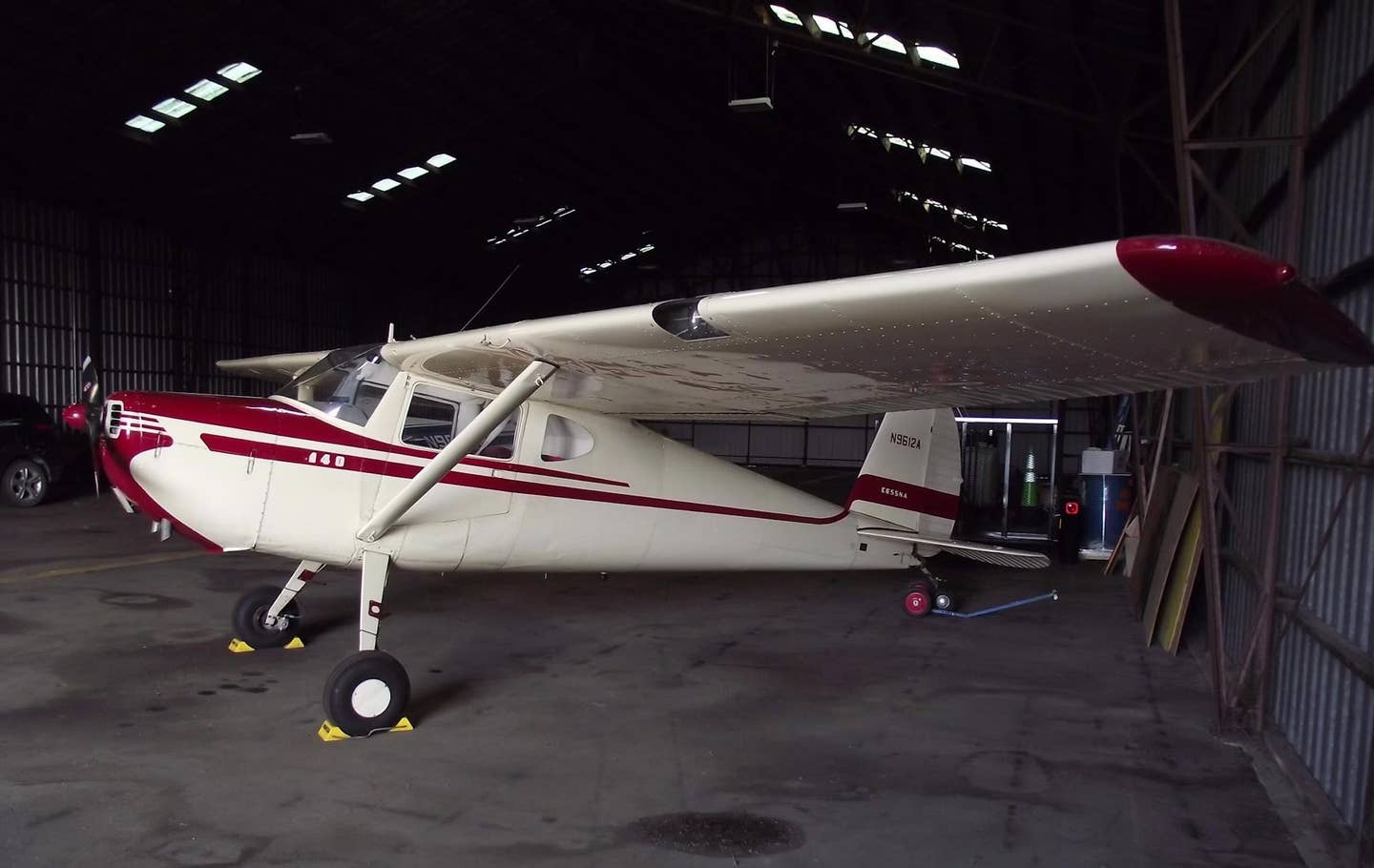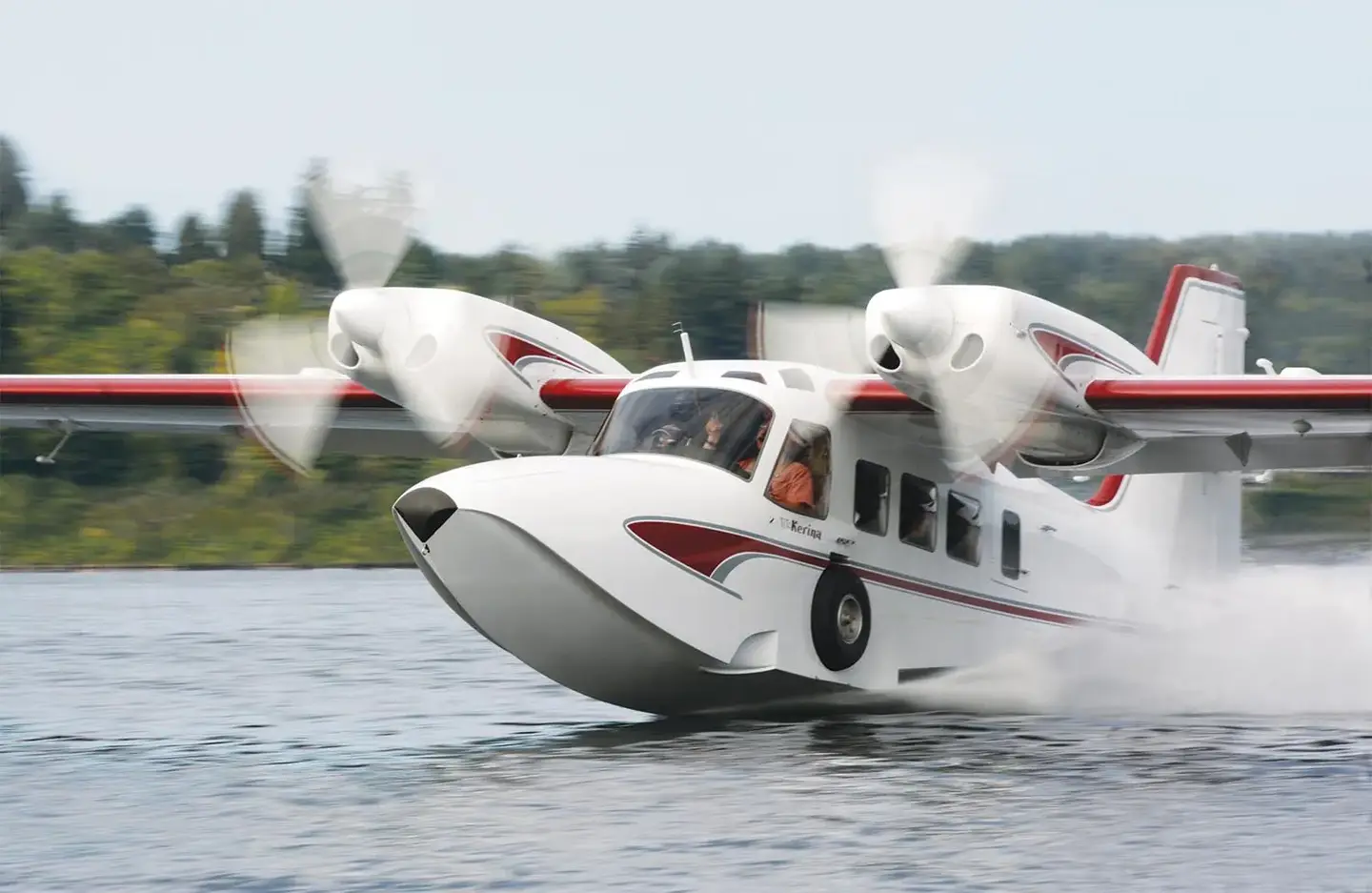A Really New Skylane
A Garmin glass panel brings a fresh view for Cessna
 |
Cessna naysayers would complain that the company's line of high-wing singles has changed little since its inception, save a continuing, but sometimes diminutive, evolution of enhancement and refinement. But at a recent gathering the company put on for its network of dealers, a sneak preview of the 2004 Skylane turned so many heads that more than 300 of the new C-182s, as well as Skyhawks and Stationairs, were sold---in a single day. Beginning in the second quarter of this year, Cessna will begin shipping its 230-hp four-seat singles with Garmin G1000 glass panels. From a distance, the 2004 Skylane isn't particularly novel. It sports a blue, white and tan paint scheme for the new model year, but the silhouette is still classic Cessna. The finely finished leather interior is a holdover from an earlier year, and those with previous 182 experience will have little difficulty finding their way around inside. There are new LED lights in the cabin, giving the interior a jet-like feel.
 Cessna continues to wrap the passengers in leather. |
But one look at the panel is all it takes to stop most pilots in their tracks. It's a Garmin G1000 Integrated Cockpit System, which consists of two high-resolution display screens, a primary flight display (PFD) and multi-function display (MFD), providing flight, navigation, communication, terrain, traffic, weather and engine sensor data, all at the same time.
"Scanning the panel for all your information is practically a thing of the past," says Cessna Flight Training Supervisor Kirby Ortega. "You don't have to teach your eyes how to look all over the place for information. Now it's all right there, right in front of you."
One feature that caught Cessna's corporate attention is the G1000's Attitude Heading and Reference Systems (AHRS), which uses a system of algorithms to calculate all three axes of flight data. While all-glass panels rely on AHRS technologies, the G1000 is the only system that can initialize itself "on the move." That might not sound like much at first blush, but the difference becomes more apparent should an AHRS system suffer a power interruption or otherwise hiccup. The G1000 can re-initialize itself in flight, while other systems require the pilot to land to get the system going again.
Also, the Garmin unit is the only system that's "integrated." For example, in the Cirrus SR22, Avidyne chose to design its FlightMax Entegra display screens to interface with two separate, stand-alone Garmin 430s mounted at the end of the pilot's right hand. Garmin built all the navigation/communication/ surveillance radios to be self-contained within the G1000.
 A molded headliner offers cabin-class LED lighting and air ducts for multilevel ventilation, giving the new Skylane a jet-like feel. |
If the thought of having an electrically driven computer system replacing all your instruments has your attention, you're not alone. "We don't put all our eggs in one basket," smiles Ortega. The new all-glass-paneled Skylane has what Cessna calls "an essential bus," powered by a standby battery. The essential bus handles just what the name implies---the essentials, namely the PFD, primary flight sensors, engine monitoring and a single NAV/COM/GPS unit for at least 30 minutes. And for the truly apprehensive pilot, there's a standard airspeed indicator, altimeter, mag compass and vacuum-driven attitude indicator as backup to the backup. "That way, you've always got the same basics you've always had," Ortega adds.
 |
Pilots without much experience "flying the glass" approach the new Skylane with understandable apprehension. Like any completely new system, the G1000 can seem a bit overwhelming at first.
"If you've been flying Garmin boxes for a while, you're already way ahead in terms of the 'knobology,'" Ortega says. "But even if you haven't, it's all very intuitive." He recently shuttled a G1000-equipped Skylane from Wichita, Kan., to the California coast, much of the time watching over a student pilot at the controls. "After a while of flying along with the G1000, my student looked back down at the standard backup attitude indicator and said, 'Holy smokes! I can't fly with that thing anymore!'"
Because the new Garmin system is solid-state and lighter than "steam gauges," G1000-equipped Skylanes can roll out of Wichita with 60-plus pounds of additional useful load. Though Cessna will continue to offer traditional avionics in all its singles, this top-of-the-line Garmin Integrated Cockpit System will be available first in both normally aspirated and turbocharged 182s. The company announced months ago that the Garmin glass panel also will be in the new Mustang jet and both normally aspirated and turbocharged 206 Stationairs, and is now sizing up plans to offer it in the 208 Caravan and perhaps even the entry-level 172 Skyhawk. The fact that Cessna sold out its entire production allotment of 2004 G1000-equipped Skylanes has left the company with an enviable problem: how to make even more.
Garmin G1000 Close UpBy Bill Cox |
|
 The G1000 has been in the works for several years as a comprehensive follow-on to the company's runaway success with the 430/530 multi-talented navcoms. The G1000 extends Garmin's reach from building individual avionics boxes to incorporating all radios and most flight and engine instruments into a two-unit, all-glass display. The system consists of a 10-inch primary flight display (PFD) dedicated to aircraft attitude and flight conditions and a 10-inch or optional 15-inch multi-function display (MFD) committed to navigational awareness and all parameters of engine/systems condition. Both are XGA quality, high-resolution (1024 x 768) screens, capable of readouts in a multitude of colors. The system is designed to capitalize on the latest developments in flight control, air data management and Ethernet connectivity. As the name implies, the primary flight display specializes in depicting all aspects of aircraft flight information. The system utilizes a huge artificial horizon with V-bar indicator and an HSI in your choice of arc mode or full display at bottom center. Vertical tapes to left and right of center read out airspeed and altitude respectively, and there's plenty of room remaining to display a miniature moving map and a real-time nearest airport display. The MFD is more concerned with navigational information. In addition to all the standard nav and com indications plus the moving map, the G1000 will offer depictions of weather such as NEXRAD radar summaries or METARS text. The system also will be capable of screening Class B Terrain Awareness Warning System (TAWS), detailed topographic mapping and Traffic Information System (TIS), the last using ATC Mode S data uplink technology. Both of the 10-inch displays are bright and well-defined, easily readable in any combination of sun and shade. The panel is finished with laser-etched polycarbonate overlays, a feature Garmin says is normally reserved for turbine aircraft At first glance, the G1000 appears to be a little overwhelming, but as with most things aviation, it's all in your frame of reference. In fairness, the G1000 isn't that difficult to comprehend. Fly the system even for an hour and it becomes friendlier---fly it for 10 hours, and you may wonder what you thought was so tough to begin with. In addition to the usual VHF/GPS nav and VHF com controls, the G1000 incorporates transponder and switching panel controls. Once you learn the layout of all the buttons, knobs and switches, most of the inputs are relatively intuitive with few functions beyond the comprehension of mere private pilots. It's apparent at the outset the G1000 is in its element in the IFR environment---it does, after all, virtually replace the view straight ahead---and that's of the most use when there is no view straight ahead. The primary function of such an integrated avionics suite is to incorporate all flight displays and navigation functions in a single, simple, easy-to-interpret system, and the G1000 does exactly that. The switching panel is mounted in the space between the two 10-inch glass screens and includes the intercom at the bottom. As with the stand-alone Garmin switcher, the unit is fairly telegraphic, though it's mounted vertically rather than horizontally, with mic and speaker select switches, provisions for up to three comms (including HF) and all the standard nav receive modes. Engine condition instruments are stacked down the left side of the MFD, with manifold pressure and rpm represented as pseudo round gauges at top left and the remainder of the engine criterion laid out left to right below. As with most high-line EICAS instruments, all engine gauges are primed with maximum/minimum indications, designed to flash if any indication subceeds or exceeds acceptable parameters. In the event of a screen failure, the G1000 automatically switches to reversionary mode, continuing to offer PFD information on the operable screen. In a sense, the G1000 system may be almost too talented. The two screens integrate so much information so conveniently that you're tempted to keep your eyes inside the airplane too much, obviously a major benefit in IFR conditions, not so practical in good VFR. Still, by any measure, Garmin's G1000 Integrated Avionics System brings true glass panel technology to a class of airplanes that wasn't expecting to see it for at least another decade. |
|

Subscribe to Our Newsletter
Get the latest Plane & Pilot Magazine stories delivered directly to your inbox






